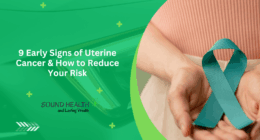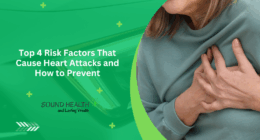- How Much Protein Women Over 50 Need for Strength and Energy: Protein needs increase by up to 50% after age 50.
- Insufficient protein accelerates muscle loss and frailty.
- Aim for 1.0–1.6 grams per kilogram of body weight per day, or 75–120 grams for most women over 50.
- Spread protein intake evenly across meals for best results.
- Simple dietary tweaks can help you reach your goals without drastic changes.
- Prioritizing protein today is an investment in a stronger, more vibrant tomorrow.
As women cross the milestone of 50, their nutritional needs change in significant ways—none more crucial than their requirement for protein. While younger adults can often get by with modest amounts, the years beyond midlife bring new challenges to muscle maintenance, metabolism, and overall vitality. Understanding how much protein is needed, why it matters, and how to get enough can make a profound difference in staying slim, strong, and energized.

Why Protein Becomes More Important With Age
Protein is the cornerstone of muscle, bone, and tissue health. As early as age 40, the body begins to lose muscle mass—a process called sarcopenia—which accelerates with each passing decade. This natural decline not only affects strength and mobility but also increases the risk of falls, fractures, and a loss of independence. The body’s ability to synthesize protein from food also diminishes with age, a phenomenon known as anabolic resistance. This means older adults need more protein to achieve the same muscle-building effects as when they were younger.
Moreover, protein is integral to immune function, hormone production, and the repair of tissues and cells. For postmenopausal women, who face a higher risk of osteoporosis and metabolic slowdown, adequate protein intake supports bone health and helps maintain a healthy weight by promoting satiety and preserving lean mass.
What Happens If You Don’t Get Enough Protein?
Failing to meet daily protein needs can have cascading effects. Research shows that women over 50 who consume less than the recommended amount of protein experience a reduction in muscle size, strength, and function. Over time, this can lead to frailty, slower recovery from illness or surgery, and a greater risk of falls and fractures. One study found that postmenopausal women who ate half the recommended protein lost lean body mass and muscle strength, while those who met or exceeded guidelines maintained muscle and nitrogen balance.
The consequences extend beyond muscle. Insufficient protein can impair immune response, slow wound healing, and even affect mood and cognitive function. As the body pulls amino acids from muscle to meet its needs, the loss of muscle mass can make everyday activities—like climbing stairs or carrying groceries—more difficult.
Daily Protein Requirements by Age: A Chart
Protein needs are not static; they increase with age, activity level, and health status. While the federal guideline for adults is 0.8 grams per kilogram of body weight per day, experts recommend higher intakes for those over 50 to counteract muscle loss and anabolic resistance.
| Age Group | Protein (g/kg body weight/day) | Example: 150 lb (68 kg) Woman | Notes |
|---|---|---|---|
| 19–50 years | 0.8 | 55g | Minimum to prevent deficiency |
| 51–70 years | 1.0–1.3 | 68–88g | Supports muscle and bone health |
| 70+ years | 1.1–1.2 | 75–82g | Higher end for optimal physical function |
| Over 50 (active) | 1.2–1.6 | 82–109g | For those who exercise or are recovering |
Simple Ways to Boost Protein in Your Diet
Meeting these higher protein targets doesn’t have to be daunting. Small, consistent changes can add up:
- Start your day with eggs or Greek yogurt instead of cereal.
- Add beans, lentils, or tofu to salads, soups, or stir-fries.
- Snack on nuts, cheese, or roasted chickpeas between meals.
- Choose lean meats, fish, or poultry as the centerpiece of lunch and dinner.
- Incorporate protein-rich grains like quinoa or buckwheat.
- Use protein powder in smoothies or oatmeal for an easy boost.
For instance, swapping out a bowl of oatmeal for one topped with cottage cheese and berries can add 15 grams of protein. Likewise, a handful of almonds or a slice of turkey roll-up can turn a light snack into a muscle-supporting mini-meal.
What Happens When You Increase Your Protein Intake?
Women who increase their protein intake after age 50 often notice improvements in strength, energy, and body composition. Studies show that those who consume protein at the higher end of recommendations—especially when combined with resistance training—lose less lean mass, recover faster from illness, and maintain greater independence. Anecdotally, many women report feeling fuller for longer, making it easier to manage weight and avoid unhealthy snacking.
In a three-year study, older adults in the highest quintile of protein intake lost 40% less lean mass than those in the lowest quintile. For someone who’s always been active but noticed a recent decline in stamina, simply increasing protein and adding strength exercises can restore lost vigor and confidence.
Conclusion
For women over 50, protein is not just a dietary component—it’s a vital ally in the quest for health, strength, and independence. By understanding and meeting your body’s evolving protein needs, you can stay slim, strong, and energized well into your later years. Whether it’s a protein-rich breakfast, a mindful snack, or a balanced dinner, every meal is an opportunity to nourish your muscles and support your well-being.
Also Read | What Does Poison Ivy Rash Look Like? Effective Treatments and Warning Signs










